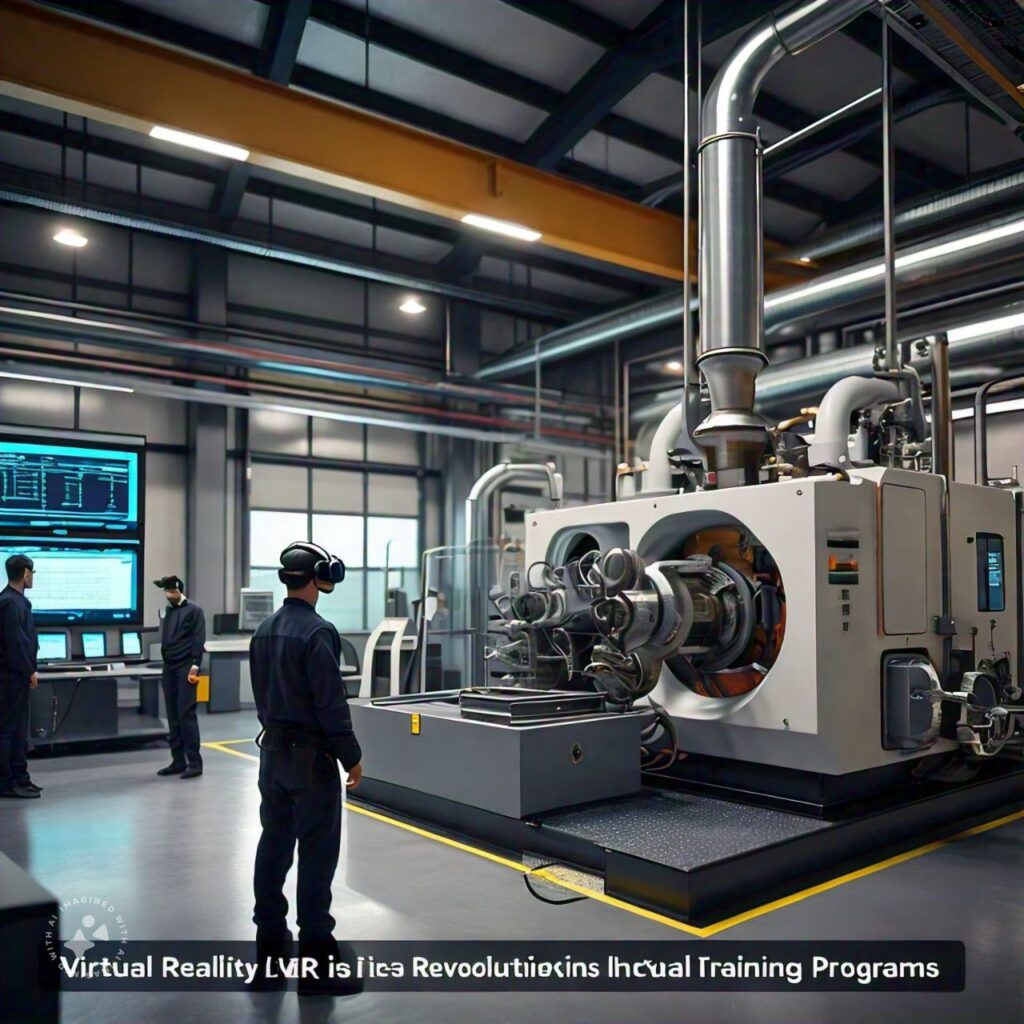
Introduction to Virtual Reality (VR) in Industrial Training
Virtual Reality (VR) is no longer just a tech buzzword—it’s a transformative tool reshaping industrial training. Virtual Reality (VR) in industrial training offers immersive, hands-on learning experiences that simulate real-world scenarios. From manufacturing to healthcare, industries are leveraging VR to enhance skill-building, reduce risks, and boost efficiency.
VR provides trainees with an interactive environment where they can practice complex tasks without the fear of costly mistakes. Imagine training to operate heavy machinery in a virtual setting—safe, controlled, and as realistic as it gets. It’s not just cool technology; it’s a smarter, safer way to learn.
Companies worldwide are increasingly adopting VR to stay competitive and ensure their workforce is future-ready. Let’s dive into how this game-changing tech is revolutionizing industrial training.

Benefits of Virtual Reality in Industrial Training Programs
Investing in Virtual Reality (VR) in industrial training brings a host of advantages. Here’s why industries are jumping on the VR bandwagon:
- Enhanced Learning Retention
- VR immerses trainees in lifelike scenarios, helping them retain knowledge better than traditional methods. Studies suggest that people remember 75% of what they experience in VR compared to 10% from reading or lectures.
- Safety First
- With VR, trainees can practice potentially hazardous tasks in a risk-free environment. For instance, learning to handle chemical spills or operate cranes becomes safer and more effective.
- Cost-Efficiency
- While the initial investment in VR might seem steep, it saves money in the long run by reducing material wastage, equipment downtime, and training accidents.
- Global Collaboration
- VR connects teams from different locations, enabling collaborative training sessions without the need for travel.
- Data-Driven Insights
- VR training modules often come with performance analytics, offering insights into trainee progress and areas for improvement.
Applications of VR in Various Industrial Sectors
The applications of Virtual Reality (VR) in industrial training span across multiple sectors, making it a versatile tool.
| Industry | VR Application |
|---|---|
| Manufacturing | Training workers to use machinery and maintain assembly lines. |
| Healthcare | Simulating surgeries, emergency response training, and patient handling. |
| Construction | Teaching safety protocols, equipment usage, and project management. |
| Aerospace | Flight simulations and spacecraft assembly training. |
| Energy Sector | Drilling operations, wind turbine maintenance, and nuclear plant safety training. |
These applications prove VR isn’t just about flashy graphics—it’s a practical tool driving efficiency and innovation.
Challenges and Future Trends of VR in Industrial Training
While VR offers significant advantages, it’s not without challenges.
Challenges:
- High Initial Costs:
Setting up VR infrastructure requires substantial investment. However, as technology advances, costs are steadily declining. - Technical Limitations:
Not all VR systems are created equal. Ensuring compatibility and maintaining high-quality experiences can be tricky. - Resistance to Change:
Traditional industries may hesitate to adopt VR due to unfamiliarity or fear of disrupting existing workflows.
Future Trends:
- AI-Powered VR: Combining VR with AI will create personalized training modules tailored to individual needs.
- Haptic Feedback: Enhanced gloves and suits will add a tactile element, making VR even more immersive.
- Wider Accessibility: As VR hardware becomes more affordable, more industries will integrate it into their training programs.
Conclusion
Virtual Reality (VR) is revolutionizing industrial training, making it safer, smarter, and more effective. From reducing risks to improving learning outcomes, the benefits are clear. Businesses that embrace this technology are investing in the future of their workforce.
Call-to-Action (CTA)
Curious about the potential of VR? Invest in cutting-edge training solutions today and empower your workforce to excel in a dynamic industrial landscape!








